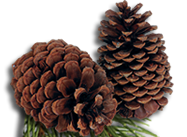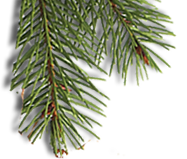|
|
Self-Guided Tour
Six hundred or so million years ago, long before man walked this area, it was covered by numerous huge oceans that carved portions of the canyon, and then filled-in the contour as the oceans receded. About 60 million years ago, the last major ocean receded, and land masses, again, began to appear causing drainages such as Spearfish Canyon to formed as softer rock was eroded away. Today, the canyon is part of the Black Hills National Forest.
The Canyon’s high walls are of three dominant rock types. DEADWOOD shale, at the bottom, can be identified by its brown color, is multi-layered in appearance and ranges from 10 to 40 feet thick. ENGLEWOOD limestone, in the middle, is pink to red colored, and is 30 to60 feet thick. PAHASAPA limestone, the top layer, is the thickest ranging from 300 to 600 feet, is buff colored and weather gray in appearance, and is noted for its caves and fossils. |

The turkey is just one of the bird varieties you might see during your drive through Spearfish Canyon.
|
|

Canyon beauty comes in
many shapes and sizes.
|
|
Archaeological evidence indicates big game hunters and their families (Paleo-Indians) were present in the area and, possibly, Spearfish Canyon at lest 10,000 years ago. The canyon was as abundant with scenic resources then as it is today, and probably drew those early people to it then as it does now. |
Spearfish Canyon scenery is unique because the view is always close, always upward, and has a mixture of four distinct vegetative regions represented. Trees and plants from ROCKY MOUNTAIN, EASTERN DECIDUOUS, NORTHERN FOREST, and GREAT PLAINS can be found here. Canyon vegetation is extremely diverse – of the 1,585 plant species found in South Dakota, 1,260 species are in the Black Hills and Spearfish Canyon is representative in of the extreme variety. |

Winter in spearfish Canyon is a very special time of year. The summer's green canopy gives way to one with a white overlay.
|
|

Cool evenings and multi-colored vistas await the Fall traveler.
|
|
It is said that every season has a benefit here: Spring in the Canyon provides rejuvenation; Summer – tranquility; Fall – color; and Winter – serenity.
From this point on, and throughout the Canyon, you may see Turkeys, Blue jays, Woodpeckers, and Cliff Swallows. |
<— Go Back - Continue —>
|
|
| |
 |
|


